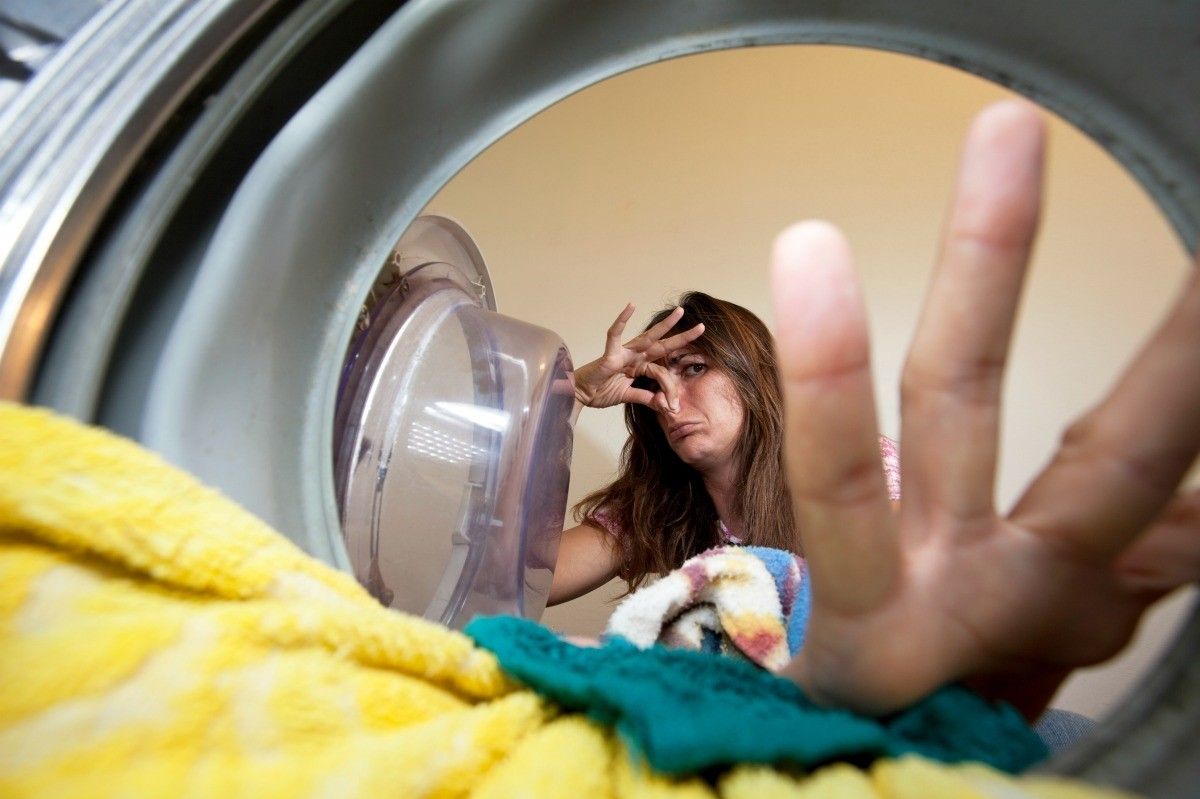

Articles
Why Does My Washer Smell Burnt
Modified: August 16, 2024
Learn why your washer smells burnt with our informative articles. Find tips and solutions to keep your washing machine smelling fresh and running smoothly.
(Many of the links in this article redirect to a specific reviewed product. Your purchase of these products through affiliate links helps to generate commission for Storables.com, at no extra cost. Learn more)
Introduction
Having a burnt smell coming from your washer can be concerning, as it not only indicates that something is wrong with the appliance but also leaves you wondering if it’s safe to continue using it. A burning odor from a washer can stem from several different causes, and it’s important to identify and address the issue promptly to prevent any further damage to the machine.
In this article, we will explore the possible causes of a burnt smell in a washer and discuss steps you can take to troubleshoot and fix the issue. By understanding the underlying reasons behind the odor, you can make an informed decision on whether to attempt DIY repairs or seek professional assistance.
It’s worth noting that while it’s common for washers to emit a mild burning smell during their initial uses due to the residual manufacturing oils burning off, a persistent and strong burnt smell is definitely a cause for concern. Let’s dive into the potential culprits behind the unpleasant odor.
Key Takeaways:
- Troubleshoot and address burnt smell in washer by inspecting motor, drive belt, electrical components, accumulated dirt, and bearings. Seek professional help for complex repairs and ensure safe operation of the appliance.
- Regular cleaning maintenance of washer drum and timely replacement of worn drive belt can prevent burnt smell, ensuring optimal performance and eliminating unpleasant odors. Professional assistance is recommended for complex repairs.
Read more: Why Does My Space Heater Smell Burnt
Possible Causes of a Burnt Smell in a Washer
When you detect a burnt smell coming from your washer, there are several possible reasons that could be causing it. Identifying the root cause is crucial in order to implement the appropriate solution. Here are some common culprits:
- Overheated Motor: The motor in your washer can overheat due to a variety of reasons, such as excessive load, a malfunctioning motor, or a lack of proper ventilation. When the motor overheats, it can emit a burnt odor.
- Worn Drive Belt: The drive belt, responsible for spinning the washer drum, can become worn or damaged over time. A worn belt can slip and generate heat, resulting in a burnt smell.
- Electrical Issues: Faulty electrical components or connections in the washer can cause overheating, leading to a burnt smell. This can occur in wiring, switches, or circuit boards within the appliance.
- Belt Slippage: If the drive belt is not properly aligned or tensioned, it may slip while the machine is in operation. This can create friction and heat, giving off a burnt odor.
- Burning Accumulated Dirt and Grime: Over time, dirt, lint, and other debris can accumulate inside the washer drum, motor, or other components. When these substances come into contact with hot surfaces, they can burn and produce an unpleasant smell.
- Excessive Friction in the Bearings: Bearings are responsible for allowing the drum to rotate smoothly. If the bearings become worn out or insufficiently lubricated, they can generate friction and heat, resulting in a burnt smell.
It’s important to note that these are just some of the potential causes of a burnt smell in a washer. It’s recommended to perform a thorough inspection and troubleshooting process to pinpoint the exact source of the odor. This will help you determine the most appropriate course of action to resolve the issue.
Overheated Motor
One of the common causes of a burnt smell in a washer is an overheated motor. The motor in your washer works hard to spin the drum and agitate the clothes during the wash cycle. However, if the motor becomes overloaded or there is a malfunction, it can generate excessive heat, resulting in a burnt odor.
Several factors can contribute to an overheated motor. One possibility is an excessive load of laundry. Overstuffing the washer with heavy or large items can strain the motor, causing it to work harder and generate more heat. It’s important to follow the manufacturer’s guidelines regarding the maximum recommended load capacity of your washer.
In addition, a faulty motor or a lack of proper ventilation can also lead to overheating. Malfunctions such as worn-out motor parts or a motor that is running at a higher than normal voltage can cause excessive heat buildup. Additionally, if the washer is located in an enclosed space or the vents are blocked, the motor may not receive adequate airflow, leading to overheating.
To address an overheated motor, start by unplugging the washer and allowing it to cool down. Remove any excessive load from the drum to relieve strain on the motor. Check for any obstructions in the vent system and ensure that the washer is properly ventilated.
If the problem persists, it may be necessary to seek professional assistance. A certified appliance technician can inspect the motor, diagnose the issue, and recommend the appropriate repairs or replacements as needed.
Remember, dealing with an overheated motor can be hazardous, so exercise caution and consult a professional if you are unsure about handling the issue on your own.
Worn Drive Belt
A worn drive belt is another potential culprit behind a burnt smell in a washer. The drive belt is responsible for transmitting power from the motor to the drum, allowing it to spin during the wash cycle. Over time, the belt can become worn, stretched, or damaged, leading to slippage and generating heat, which results in a burnt odor.
You may notice signs of a worn drive belt, such as squealing or screeching noises during operation or the drum not spinning effectively. In some cases, you might even find pieces of the belt in the washer or near the machine. It’s important to address this issue promptly to prevent further damage to the washer.
To check if the drive belt is worn, you’ll need to access the back panel or the bottom of the washer, depending on the model. Ensure the washer is unplugged before proceeding. Look for any signs of wear, cracks, or fraying on the belt. If you notice any damage, it’s likely time to replace it.
When replacing the drive belt, consult your washer’s user manual or contact the manufacturer for specific instructions. In most cases, you’ll need to remove the access panel, loosen the tension from the belt, take out the old belt, and install the new one. Ensure the belt is properly aligned and tensioned before securing it in place.
If you’re not confident in replacing the belt on your own, it’s recommended to seek professional assistance. An experienced technician can replace the worn drive belt efficiently and ensure that the installation is done correctly.
By addressing a worn drive belt in a timely manner, you can prevent further damage, eliminate the burnt smell, and restore the proper functioning of your washer.
Electrical Issues
Electrical issues within your washer can also contribute to a burnt smell. Faulty electrical components or connections can lead to overheating, resulting in the unpleasant odor. It’s essential to address these issues promptly to prevent potential hazards.
One potential cause of electrical issues is faulty wiring. Over time, the wiring inside the washer can become damaged or worn, leading to loose connections or short circuits. These issues can cause electrical currents to heat up, resulting in a burnt smell.
Another possible culprit is malfunctioning switches or circuit boards. These components regulate the flow of electricity within the washer. If they become damaged or fail to function properly, they can create excessive heat, leading to a burnt odor.
To address electrical issues, it’s crucial to start by unplugging the washer to ensure your safety. Carefully inspect the wiring connections for any signs of damage, such as frayed wires or loose connections. If you notice any issues, it’s recommended to consult a professional electrician or appliance technician to handle the repairs.
Replacing faulty switches or circuit boards can be complex and requires knowledge of electrical systems. It’s best to leave these repairs to a qualified professional to ensure they are done safely and accurately.
It’s important to remember that dealing with electrical issues can be dangerous, especially if you’re not experienced in working with electrical systems. Always prioritize your safety and consult a professional if you are uncertain about handling electrical repairs on your own.
By addressing electrical issues promptly, you can prevent further damage to your washer, eliminate the burnt smell, and ensure the safe operation of your appliance.
Read more: Why Does My Air Conditioner Smell Burnt
Belt Slippage
If you notice a burnt smell coming from your washer, one possible cause could be belt slippage. The belt in your washer is responsible for transferring the power from the motor to the drum, allowing it to rotate during the wash cycle. However, if the belt is not properly aligned or tensioned, it can slip, generating friction and heat, which leads to a burnt odor.
There are a few reasons why the belt may slip in your washer. Over time, the belt can become stretched or worn out, reducing its grip on the motor and drum pulleys. Additionally, improper belt tension can cause it to slip during operation. This can occur if the tensioner is not adjusted correctly or if the belt has become loose.
To check for belt slippage, you’ll need to access the back panel or the bottom of the washer, depending on the model. Ensure the washer is unplugged before proceeding. Inspect the belt for signs of wear, stretching, or damage. If the belt appears worn or loose, it may be time to replace or adjust it.
To replace the belt, consult your washer’s user manual or contact the manufacturer for specific instructions. In most cases, you’ll need to release the tension from the belt, remove the old belt, and install a new one. Ensure the belt is properly aligned, tensioned, and seated on the pulleys before securing it in place.
If the belt appears to be in good condition but is slipping due to improper tension, you’ll need to adjust the tensioner. Refer to the user manual or seek professional guidance on proper tension adjustment for your specific washer model.
If you’re unsure about how to handle belt replacement or tension adjustment, it’s recommended to seek assistance from a qualified appliance technician. They have the expertise to properly handle these repairs and ensure that the belt is installed or adjusted correctly.
By addressing belt slippage, you can eliminate the burnt smell in your washer, restore proper functionality, and prevent further damage to the appliance.
Burning Accumulated Dirt and Grime
A buildup of dirt, lint, and other debris inside your washer can contribute to a burnt smell. Over time, these substances can accumulate in various parts of the machine, such as the drum, motor, or heating elements. When the washer operates and these accumulated substances come into contact with hot surfaces, they can burn, resulting in an unpleasant odor.
To address this issue, it’s important to regularly clean your washer to prevent the accumulation of dirt and grime. Here are some steps you can take to clean the interior of your washer and eliminate the burning smell:
- Clean the drum: Empty the washer and wipe down the interior of the drum using a damp cloth or sponge. You can also use a mixture of mild detergent and warm water to remove any stubborn stains or residue.
- Clean the detergent dispenser and filter: Remove the detergent dispenser tray, if applicable, and clean it thoroughly. Rinse it under running water and remove any residue. Similarly, check the washer’s filter, located near the drain pump, and remove any debris or clogs.
- Run a cleaning cycle: Some washers feature a self-cleaning cycle. Refer to your washer’s manual for instructions on how to initiate the self-cleaning function. If your washer doesn’t have this feature, you can add a cup of vinegar or a specialized washer cleaner to an empty cycle and run it on the hottest setting.
- Wipe down the exterior: Don’t forget to clean the exterior of the washer as well. Use a mild cleaning solution and a cloth to wipe down the control panel, knobs, and door.
Performing regular cleaning maintenance on your washer helps to prevent the buildup of dirt and grime, reducing the chances of burning odors. It’s also a good practice to leave the washer door open after each use to allow moisture to evaporate and prevent the growth of mold or mildew.
If you have followed these cleaning steps and the burnt smell persists, it may indicate a more serious underlying issue. In such cases, it is recommended to seek the assistance of a professional appliance technician for further diagnosis and repairs.
By regularly cleaning your washer and keeping it free from accumulated dirt and grime, you can eliminate the burning smell and ensure optimal performance of the appliance.
Excessive Friction in the Bearings
The bearings in your washer help facilitate smooth rotation of the drum. However, over time, these bearings can become worn out or lack proper lubrication, leading to excessive friction and generating a burnt smell.
If you notice a burnt odor coming from your washer, it’s worth checking the bearings as a possible cause. Here’s how you can troubleshoot and address excessive friction in the bearings:
- Access the bearings: Depending on your washer model, you may need to remove the back panel or access the bottom of the appliance to reach the bearings. Ensure the washer is unplugged before proceeding.
- Inspect the bearings: Look for any signs of wear, rust, or damage on the bearings. If they appear worn out or damaged, they will likely need to be replaced.
- Lubricate the bearings: If the bearings seem to be in good condition, but lack proper lubrication, you may be able to resolve the issue by applying a lubricant specifically designed for appliance bearings. Consult your washer’s user manual or contact the manufacturer for recommended lubrication products.
- Replace the bearings: If the bearings are severely worn or damaged, it’s necessary to replace them. This task can be complex and may require specific tools and expertise. It’s recommended to seek the assistance of a professional appliance technician to ensure that the new bearings are installed correctly.
Excessive friction in the bearings is a common cause of burnt smells in washers. By inspecting and addressing this issue promptly, you can eliminate the burnt odor and restore the smooth operation of your appliance.
Remember, dealing with the bearings involves handling internal components of the washer, which can be challenging and potentially hazardous. If you’re unsure about performing the inspection or replacement yourself, it’s best to seek professional help to ensure the job is done accurately and safely.
Run a cleaning cycle with hot water, vinegar, and baking soda to remove any buildup causing the burnt smell in your washer.
How to Troubleshoot and Fix the Burnt Smell
Experiencing a burnt smell in your washer can be concerning, but with some troubleshooting and potential repairs, you can resolve the issue. Here are steps to help you address the burnt smell:
- Identify the source: Begin by pinpointing the source of the burnt odor. Is it coming from the motor, belt, electrical components, accumulated dirt and grime, or excessive friction in the bearings? Understanding the cause will guide you in finding the appropriate solution.
- Inspect the washer: Perform a visual inspection of the washer’s components. Check for any signs of damage, wear, or loose connections. Focus on the motor, drive belt, wiring, switches, circuit boards, drum, and bearings. Look for anything out of the ordinary that could be contributing to the burnt smell.
- Take appropriate actions based on the cause: Depending on your findings, take the necessary steps to fix the issue. Here are some potential solutions based on common causes of a burnt smell:
- If it’s an overheated motor: Unplug the washer, allow it to cool down, remove excessive load if applicable, ensure proper ventilation, and consult a professional if the problem persists.
- If it’s a worn drive belt: Inspect the belt, replace if necessary, and adjust the tension properly. Seek professional help if needed.
- If it’s an electrical issue: Check for damaged wiring, loose connections, or malfunctioning components. Consult an electrician or appliance technician to address the issues safely.
- If it’s belt slippage: Examine the drive belt, replace if worn, and adjust the tension correctly. Seek professional assistance if required.
- If it’s burning accumulated dirt and grime: Regularly clean the washer’s interior, detergent dispenser, and filter. Run a cleaning cycle or use vinegar or specialized washer cleaner if necessary.
- If it’s excessive friction in the bearings: Inspect the bearings, lubricate if needed, or replace them if severely worn. Seek professional help for bearing replacement.
- Monitor and test: After addressing the potential causes, run the washer and observe for any lingering burnt smell. Make sure the odor has been eliminated and the appliance operates smoothly.
If you’re unsure about any step or unable to resolve the issue on your own, it’s advisable to seek the assistance of a professional appliance technician. They have the expertise to diagnose and repair complex issues, ensuring the safety and proper functioning of your washer.
By following these troubleshooting steps and repairing the underlying cause, you can eliminate the burnt smell and maintain the optimal performance of your washer.
Read more: Why Does My Duvet Smell
Check the Motor
When experiencing a burnt smell in your washer, one of the first and most important steps is to check the motor. The motor is a vital component responsible for powering the drum’s rotation during the wash cycle. If the motor is overheating or experiencing malfunctions, it can generate a burnt odor.
Here’s how you can check the motor of your washer:
- Unplug the washer: Before performing any inspection or maintenance, always ensure that the appliance is unplugged to prevent any risk of electrical shock.
- Access the motor: Depending on your washer’s design, you may need to remove the back panel or access the bottom of the washer to reach the motor. Refer to your washer’s manual for specific instructions on how to access the motor.
- Inspect for visual signs: Start by visually examining the motor for any signs of damage, such as burnt wires, melted components, or loose connections. Check for any unusual odors or excessive heat emanating from the motor.
- Clean the motor: Over time, dust and dirt can accumulate around the motor, impeding proper ventilation and causing overheating. Use a soft brush or cloth to gently clean the motor and remove any debris. Ensure that the motor is free from obstructions that could lead to overheating.
- Check motor function: Plug in the washer and turn it on. Observe the motor’s behavior during operation. Listen for any unusual noises, such as grinding or rattling sounds, which could indicate motor malfunctions. Additionally, check if the motor gets excessively hot during use.
If you notice any visible damage, overheating, or unusual behavior during the motor inspection, it is recommended to seek professional help. Attempting to repair or replace a motor without proper knowledge and expertise can be challenging and potentially dangerous.
A certified appliance technician can accurately assess the motor, diagnose any issues, and recommend the necessary repairs or replacements. They will have access to the correct replacement parts and ensure proper installation.
By checking the motor and addressing any related issues promptly, you can resolve the burnt smell and restore the proper functioning of your washer.
Inspect and Replace the Drive Belt
If you’re experiencing a burnt smell in your washer, one possible cause could be a worn or damaged drive belt. The drive belt is responsible for transferring power from the motor to the drum, enabling it to spin during the wash cycle. A worn or damaged drive belt can slip, generating friction and heat, resulting in a burnt odor.
Here’s how you can inspect and replace the drive belt:
- Unplug the washer: Before proceeding with any inspection or maintenance, always unplug the washer to ensure your safety.
- Access the drive belt: Depending on your washer model, you may need to remove the back panel or access the bottom of the machine to reach the drive belt. Consult your washer’s manual for specific instructions on how to access the drive belt.
- Inspect the drive belt: Carefully examine the drive belt for signs of wear, such as cracks, fraying, or stretching. If you notice any damage, it’s a clear indication that the drive belt needs to be replaced.
- Release tension and remove the old belt: Most washers have a tension pulley or an adjustment screw that you can loosen to release tension from the belt. This will allow you to remove the old belt from the pulleys.
- Install the new belt: Take the new drive belt and position it onto the pulleys, ensuring that it is correctly aligned. Refer to your washer’s manual for the specific routing of the belt. Once in place, restore tension to the belt by adjusting the tension pulley or tightening the adjustment screw.
- Test the washer: Plug in the washer and run a test cycle to ensure that the new drive belt is functioning properly. Listen for any unusual noises or vibrations during operation.
If you’re unsure about inspecting or replacing the drive belt yourself, it’s recommended to consult a professional appliance technician. They have the necessary expertise to handle belt replacements and ensure that the new belt is installed correctly.
By inspecting and replacing a worn or damaged drive belt, you can eliminate the burnt smell and restore the proper functioning of your washer.
Address Electrical Problems
If you’re experiencing a burnt smell in your washer, addressing any electrical problems should be a priority. Faulty electrical components or connections can lead to overheating and generate the unpleasant odor. Here’s how you can address potential electrical issues:
- Unplug the washer: Before attempting to address any electrical problems, always unplug the washer from the power source to ensure your safety.
- Inspect wiring and connections: Carefully examine the wiring and connections within the washer. Look for any loose or frayed wires, damaged connections, or signs of overheating like charred or discolored areas. If you notice any issues, it’s important to address them promptly.
- Repair or replace damaged wiring: If you find damaged or frayed wires, it’s crucial to repair or replace them. Secure proper connectors and insulate the wire properly to ensure a safe and reliable electrical connection.
- Check switches and circuit boards: Inspect the switches and circuit boards within the washer for any visible damage or malfunction. If any components appear faulty, they may need to be replaced. In such cases, it’s recommended to reach out to a professional technician for assistance as handling circuit boards requires expertise and specialized tools.
- Consult an electrician: If you suspect significant electrical issues or you’re unsure about addressing them yourself, it’s best to consult a licensed electrician or a professional appliance technician with experience in electrical repairs. They can safely diagnose and fix any underlying electrical problems in your washer.
Dealing with electrical problems in appliances requires caution and expertise. It’s essential to prioritize your safety and consult professionals when needed.
By addressing any electrical issues, you can eliminate the burnt smell, ensure the safe operation of your washer, and prevent any potential hazards.
Clean the Washer Drum
If you’re experiencing a burnt smell in your washer, it’s important to clean the drum thoroughly. Over time, dirt, lint, and other debris can accumulate in the drum, especially in hard-to-reach areas. When these substances come in contact with hot surfaces during the wash cycle, they can burn and create an unpleasant odor. Here’s how you can clean the washer drum:
- Empty the washer: Start by emptying the washer of any laundry or items that may be inside.
- Mix a cleaning solution: Create a solution by mixing equal parts water and white vinegar. Alternatively, you can use a specialized washer cleaner recommended by the manufacturer.
- Wipe down the drum: Dip a clean cloth or sponge into the cleaning solution and wipe down the interior of the drum. Pay special attention to areas that may have significant buildup, such as the agitator or any crevices.
- Use a cleaning cycle: Some washers have a self-cleaning cycle specifically designed to remove dirt and grime. Consult your washer’s manual to determine if your machine has this feature and follow the instructions for running a cleaning cycle.
- Remove and clean the detergent dispenser: If your washer has a detergent dispenser, remove it according to the manufacturer’s instructions. Rinse it under warm water to remove any residue or buildup. Ensure that it is completely dry before reinserting it into the washer.
- Clean the filter: Check if your washer has a filter, usually located near the drain pump. Remove the filter and clean it thoroughly. Clear any debris, such as lint or coins, that may have accumulated. Rinse the filter under running water and replace it back into the washer.
- Leave the door open: After cleaning the drum, it’s important to leave the washer door open for adequate ventilation. This helps prevent the growth of mold or mildew inside the machine.
Performing regular cleaning maintenance on your washer helps prevent the buildup of dirt and grime, reducing the chances of a burnt smell. By keeping the drum and other components clean, you can maintain the efficiency of your washer and eliminate unpleasant odors.
If you have followed these cleaning steps and the burnt smell persists, it may indicate a more serious underlying issue. In such cases, it is recommended to seek the assistance of a professional appliance technician for further diagnosis and repairs.
Read more: Why Does My Blender Smell
Lubricate or Replace the Bearings
If you’re experiencing a burnt smell in your washer, it’s possible that the bearings are causing the issue. Bearings are responsible for allowing the drum to rotate smoothly. Over time, they can become worn out or insufficiently lubricated, resulting in excessive friction and generating a burnt odor. Here’s how you can address the bearings:
- Unplug the washer: Before attempting any maintenance, always unplug the washer from the power source to ensure your safety.
- Access the bearings: Depending on your washer’s model, you may need to remove the back panel or access the bottom of the machine to reach the bearings. Refer to your washer’s manual for specific instructions on accessing the bearings.
- Inspect the bearings: Carefully examine the bearings for any signs of wear, damage, or lack of lubrication. If the bearings appear worn out, rusty, or show any other signs of damage, they may need to be replaced.
- Lubricate the bearings: If the bearings are in good condition but lack proper lubrication, you can apply a lubricant designed specifically for appliance bearings. Follow the manufacturer’s instructions to ensure proper application.
- Replace the bearings: If the bearings are severely worn or damaged, it’s necessary to replace them. Bearing replacement can be complex and requires specific tools and expertise. It’s recommended to seek the assistance of a professional appliance technician for bearing replacement.
- Reassemble the washer: Once the bearings have been lubricated or replaced, follow the steps outlined in your washer’s manual to reassemble the machine.
- Test the washer: Plug in the washer and run a test cycle to ensure that the bearings are operating smoothly. Listen for any unusual noises or vibrations during operation.
It’s important to note that working with bearings can be challenging and potentially hazardous. If you’re unsure about inspecting or replacing the bearings yourself, it’s recommended to consult a professional appliance technician. They have the necessary expertise to handle bearing maintenance or replacement accurately and safely.
By addressing the bearings, whether through lubrication or replacement, you can eliminate the burnt smell and restore the smooth operation of your washer.
Conclusion
A burnt smell in your washer can be a cause for concern, but by identifying and addressing the underlying issues, you can eliminate the odor and restore the optimal performance of your machine. Throughout this article, we have explored several possible causes of a burnt smell in a washer and discussed steps to troubleshoot and fix the problem.
From an overheated motor to worn drive belts, electrical issues, belt slippage, burning accumulated dirt and grime, and excessive friction in the bearings, a burnt smell can stem from various factors. It’s crucial to inspect each potential cause and take the appropriate actions to resolve the issue.
You can start by checking the motor for any signs of overheating or malfunction. Inspecting and replacing the drive belt, if worn or damaged, can also eliminate the burnt smell. Addressing electrical problems, such as loose or damaged wiring, is essential for resolving any electrical-related issues. Cleaning the washer drum periodically helps remove accumulated dirt and grime, preventing it from burning and causing odors. Lastly, lubricating or replacing the bearings can resolve excessive friction and ensure smooth drum rotation.
It’s important to approach these troubleshooting and repair tasks with caution. Always unplug the washer before performing any inspections or maintenance, and seek professional help if you’re unsure or uncomfortable with the process. A certified appliance technician can diagnose and fix complex issues, ensuring the safety and effectiveness of your washer.
By taking the necessary steps to troubleshoot and fix the burnt smell, you can prolong the lifespan of your washer, prevent further damage, and enjoy fresh, clean laundry once again.
Frequently Asked Questions about Why Does My Washer Smell Burnt
Was this page helpful?
At Storables.com, we guarantee accurate and reliable information. Our content, validated by Expert Board Contributors, is crafted following stringent Editorial Policies. We're committed to providing you with well-researched, expert-backed insights for all your informational needs.
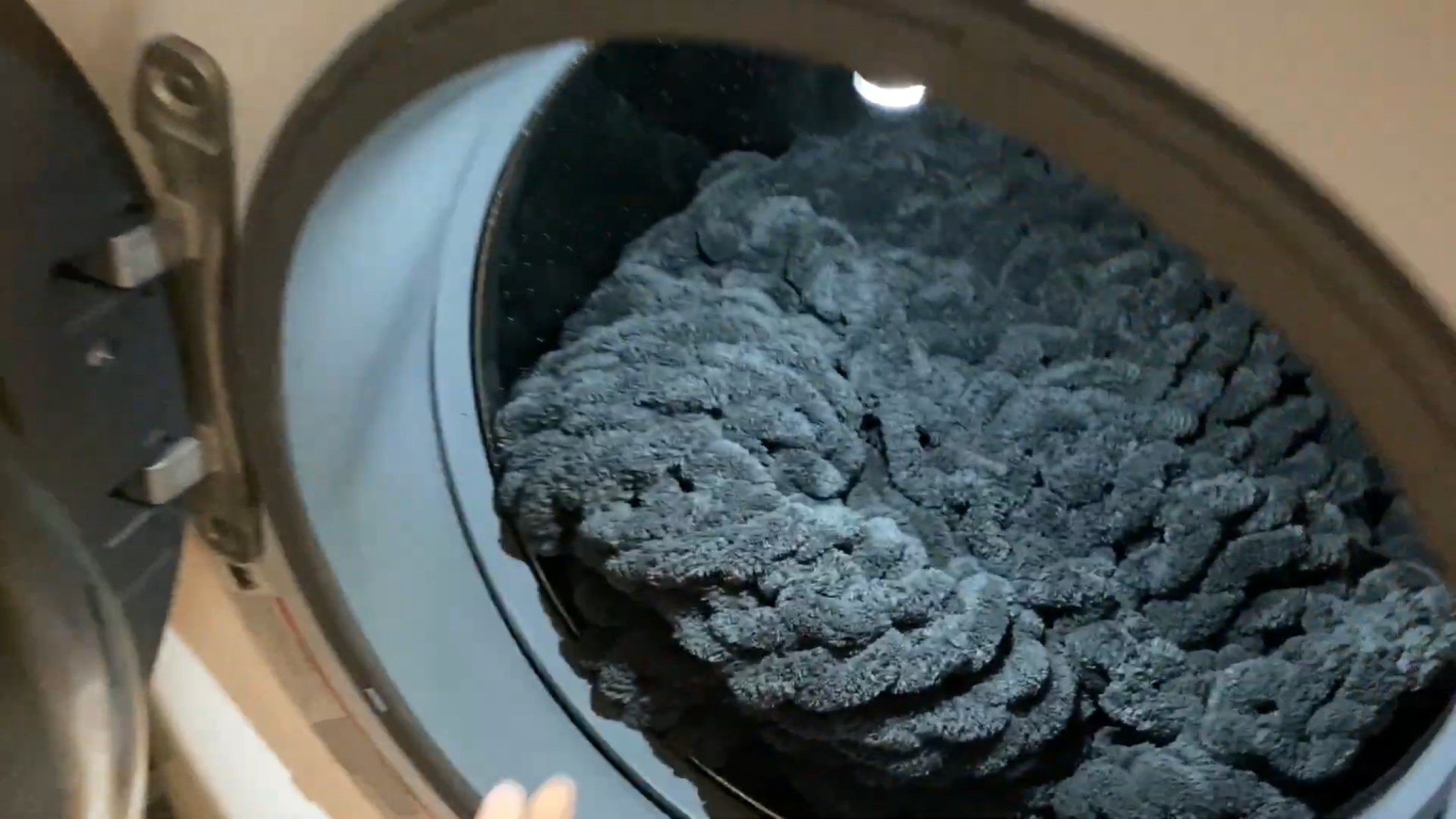



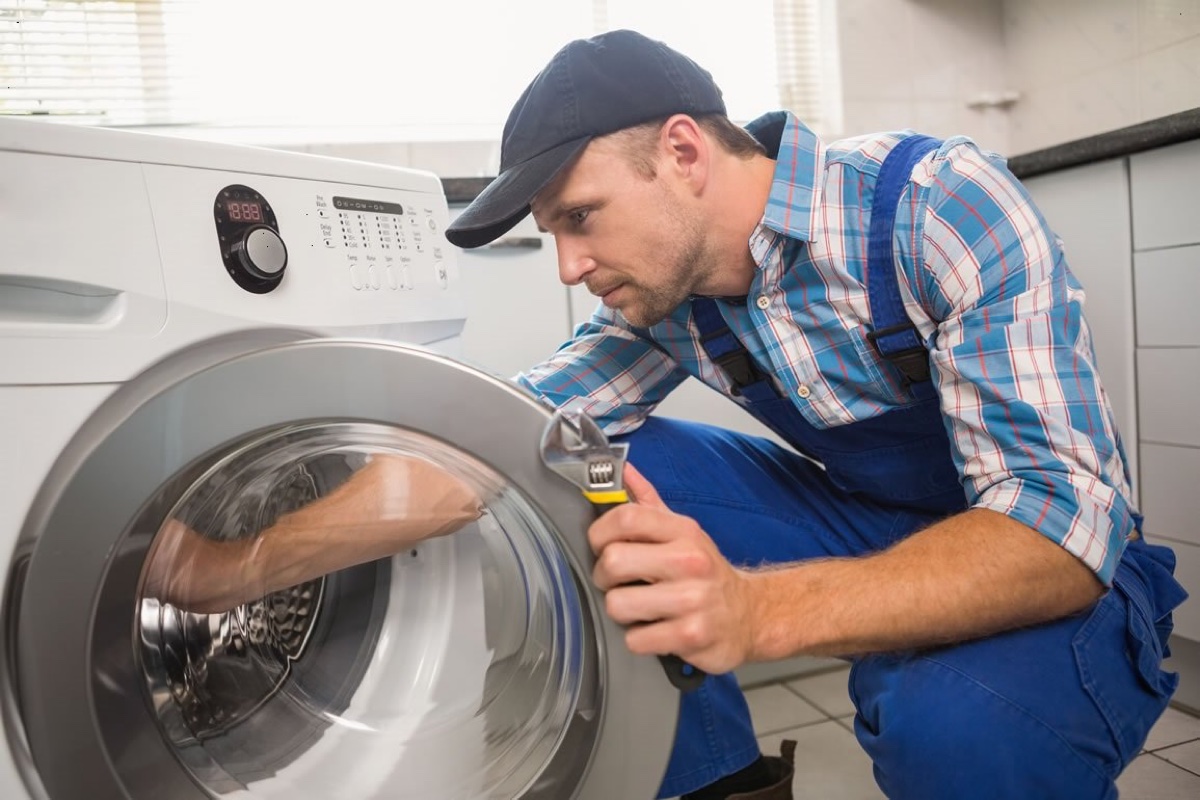
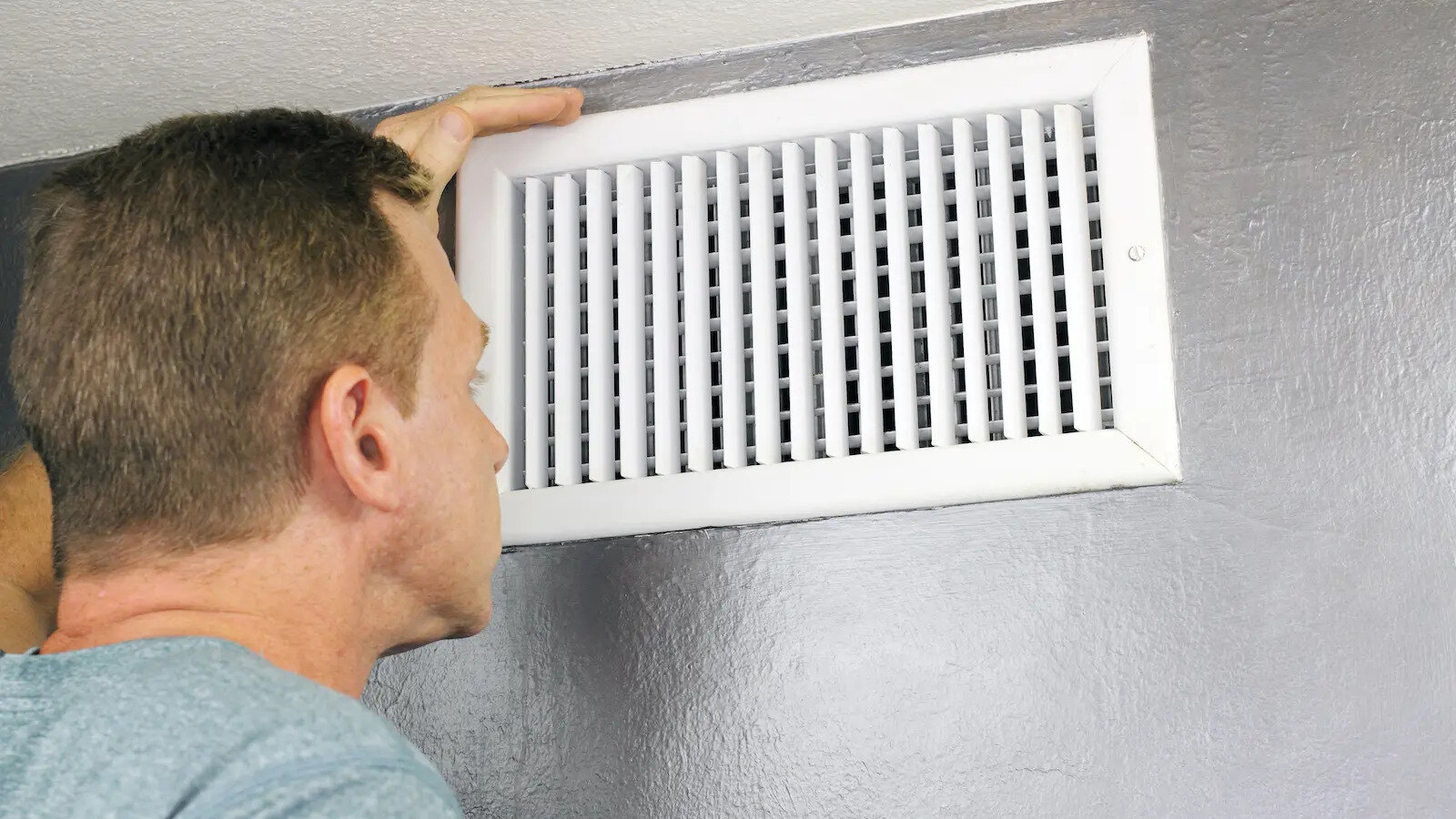
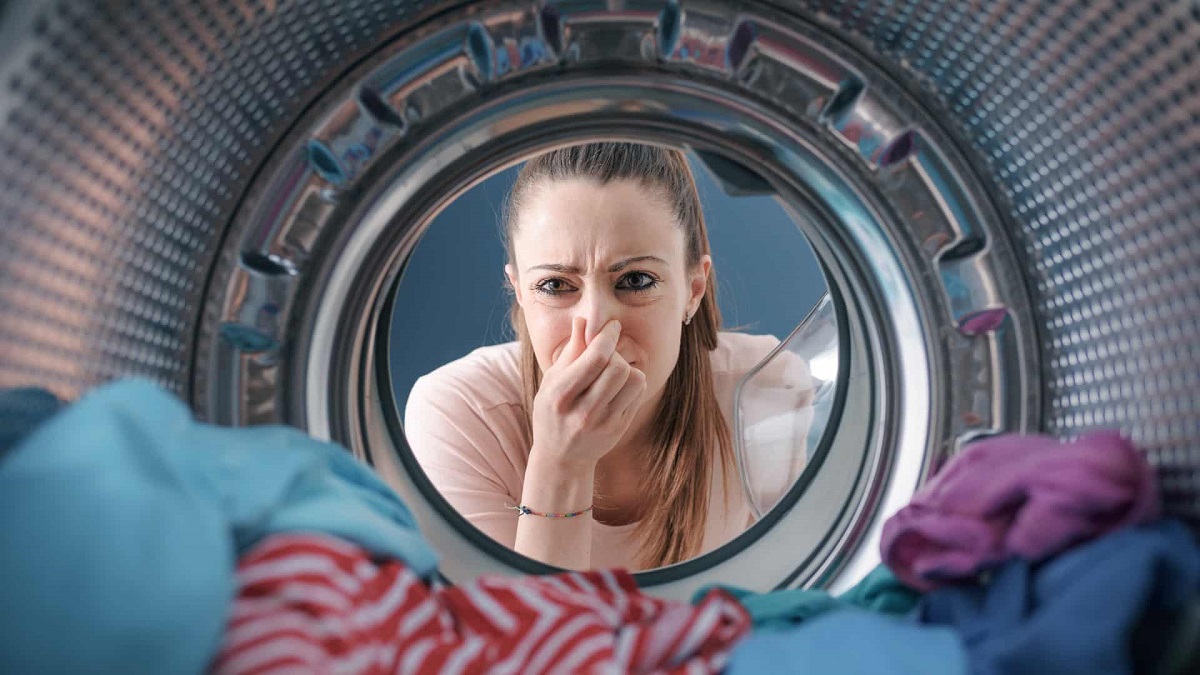
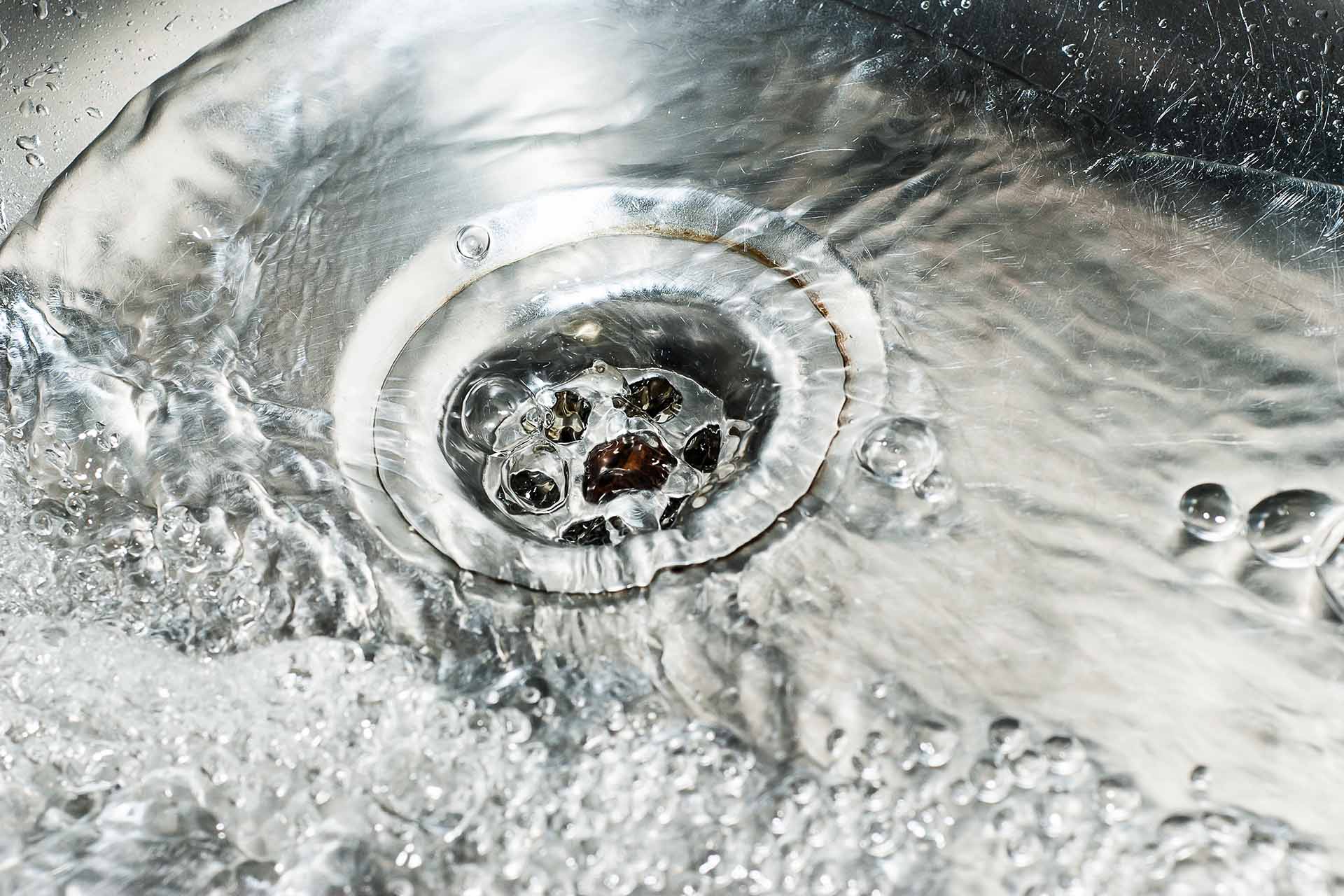



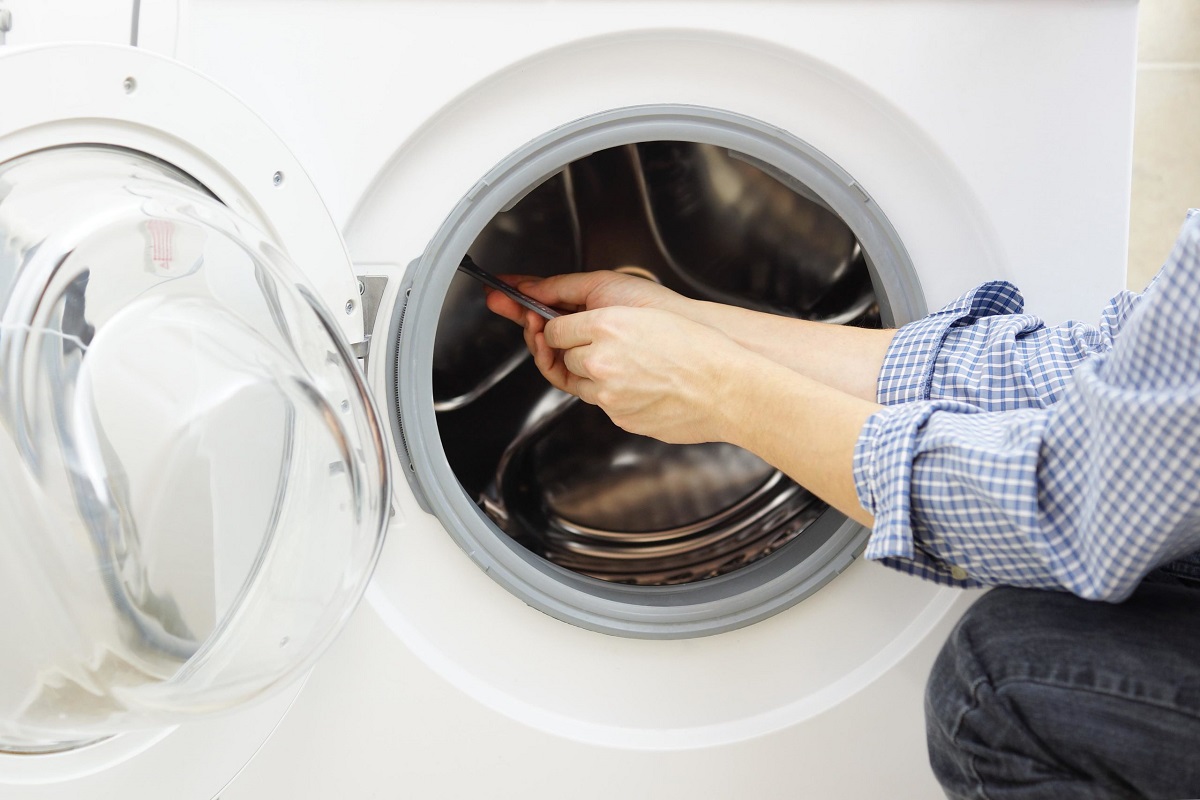

0 thoughts on “Why Does My Washer Smell Burnt”